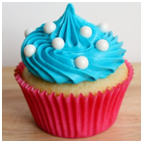The focus of this activity is to discover if students can represent objects as an array. Once in an array, it will be important to note how students are finding the total. Are they counting all, skip counting or using known facts? Students may also need to be shown how to read, create, draw, label and interpret arrays.
Purpose
- Accurately estimate a collection of objects
- Explain ways to improve an estimation
- Record numbers using drawings, words and numerals
- Use objects to create an array
- Recognise that all numbers will have more than one array
- Use numbers to label and describe arrays
- Represent arrays as repeated addition
- Use symbols to record number facts
- Understand the relationship between facts, e.g. 3 x 4 = 4 x 3 and the way their arrays are represented
Curriculum Connections: NSW Syllabus Mathematics K-10 – Stage 1.2
Area 2
- Compare and order several shapes and objects based on area using appropriate uniform informal units (ACMMG037)
At the end of this lesson students should be able to answer the following questions
- How many objects do you think are in your bag?
- What is a good estimate? Why?
- What information can you use to help you?
- What do we know about Anna’s problem?
- What size is the tray?
- What do we know about the tray?
- Can you arrange your cupcakes in another way?
- Can you use an array?
- Can you label your arrangement?
- What words do we use to describe your arrangement?
- Can you represent your arrangement in numbers?
- Can you use repeated addition?
- Can you split your arrangement in some way and represent it in numbers?
For more information, please download the attached lesson plan.
Recommended Posts



